On Church Pond in New York State’s Adirondacks, the day after their high-school graduation in early June 1969, Gary Carbocci and friend Rich Horehlad were fishing from an old wooden canoe borrowed from Paul Smith College on Lake St. Regis. The day had been a little chilly, but relaxed and uneventful. Then Rich hooked a 30-lb (or so) northern pike. As he strained to land the fish, Gary leapt to assist. “No!” cried Rich, “Don’t touch the line, Gary!” Too late; Gary pulled on the line, Rich lost his rhythm, and the fish swam away with a flick of its tail. Words were spoken, the boys resumed their positions, but there were no more fish that day.Gary Carbocci has carried the memory of the “one that got away” for “55 years, 3 months, 11 days, and counting.” He felt bad as soon as it happened, and through the months and years that followed, he made and kept a vow: he would build an Adirondack guideboat (“the boat we’d wanted to borrow from the college”) and take Rich out on Church Pond to “claim his prize.” Each of the frame blanks was laminated in seven layers of spruce. Ultimately the frames would be 3⁄4″ × 5⁄16″. The frames in the ends of the boat (seen here at top) do not overlap and thus required no feet.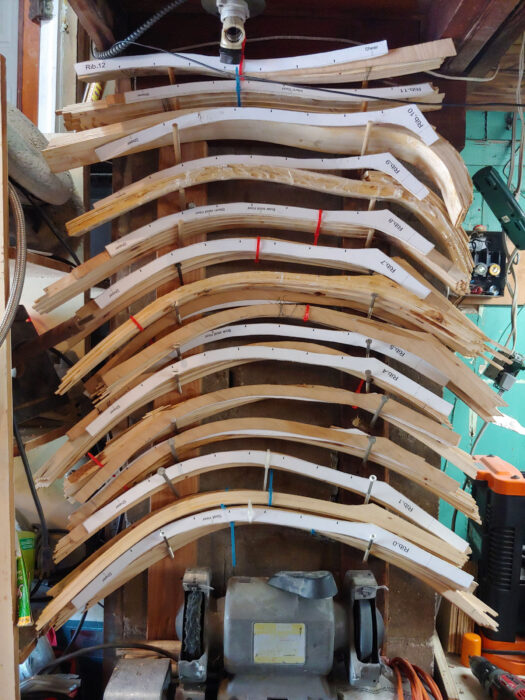 Gary Carbocci
Gary Carbocci
Join The Conversation
We welcome your comments about this article. To include a photo with your remarks, click Choose File below the Comment box.
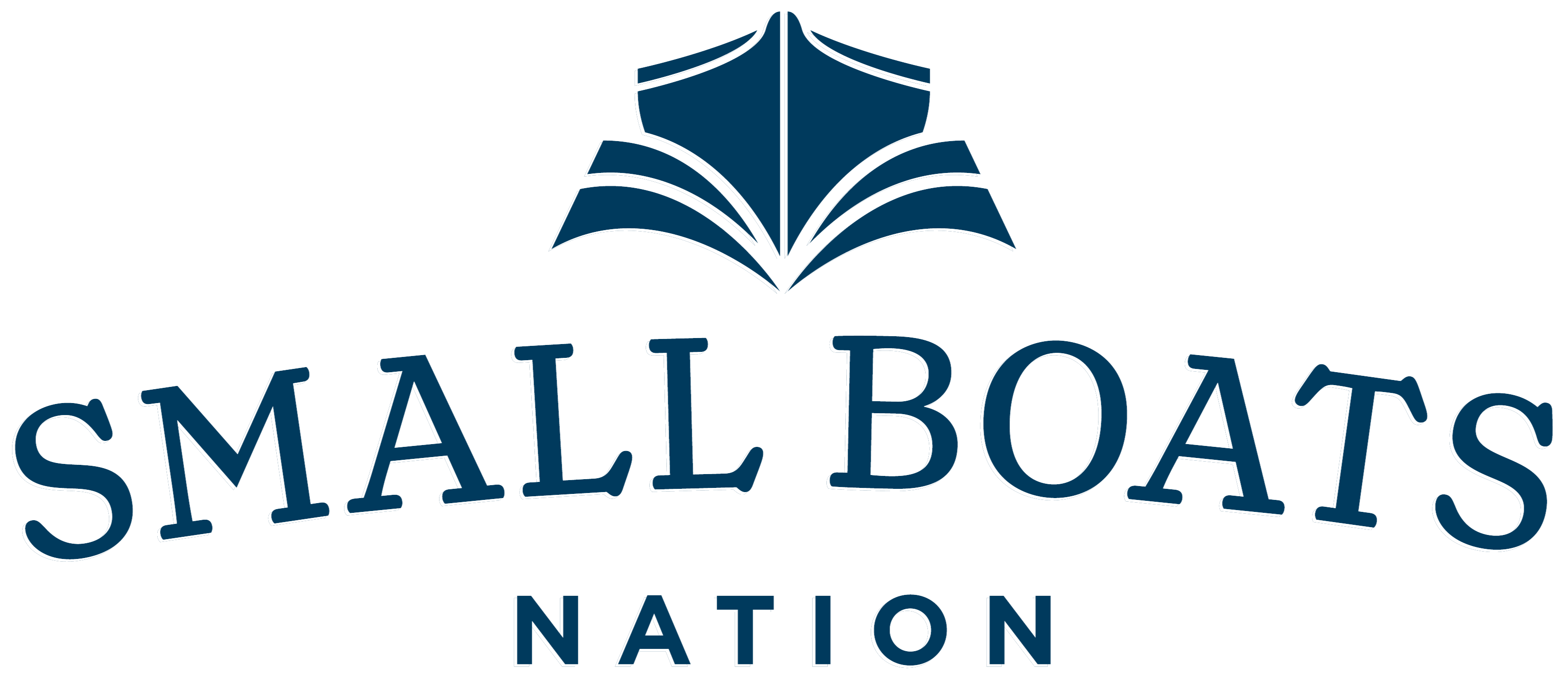
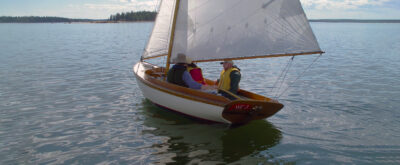


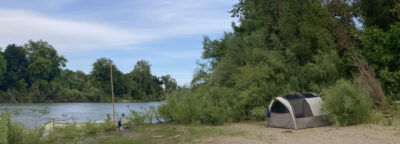
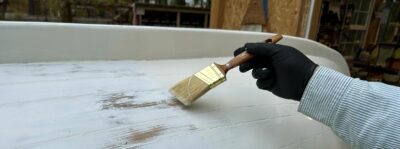
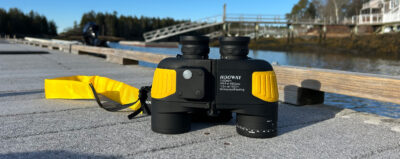

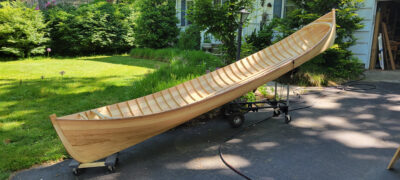
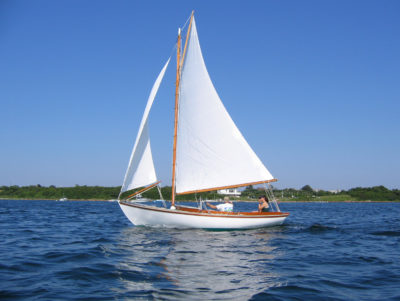
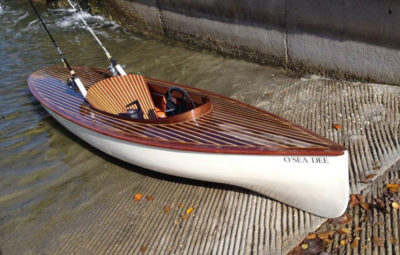
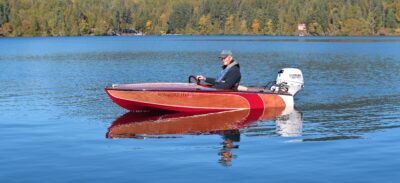
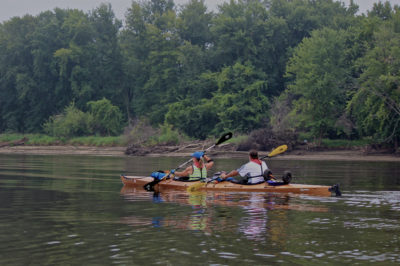
A beautiful craft!!
We built ours a few years back from the same book with strip planking, which went fairly fast compared to the frame fabricating!
I’m impressed with the lapstrake planking.
Hello John!
Thanks! I hope it does not look too much like a lapstrake. I had a Grant Lap Plane made in England for me. I used it to true up the Grant lab joint that I cut with a router set up. I also used the Grant Lap Plane to adjust the lap to get it close as possible. I had some trouble with using the tool because you need two to do a good job, one to cut the joint when the grain exits from the right and one plane to cut the joint when the grain exits on the left. I went through so many planks that I kept a few I would not have kept if I was not trying to meet a deadline. There were only eight planks on each side of the boat. I got much faster when I used the plastic template material to spile the planks! It was fun tacking the planks there were about 4000 tacks or so.
Wonderful build! Any further comments on where to purchase and how to use “plastic strips marketed for creating kitchen-countertop templates”?
John
You can see how they use it to template countertops but using it to spile a plank is just as easy. You cut the strips into 5“ to 6“ pieces and place them along the area you want a plank; glue the strips together as you go being careful not to glue it to your project. When the glue dries (which takes seconds) you remove the strips and that will give you the exact shape the mating top of the plank. You can see in the photograph in the article where I have the strips laid out on the boat I built. There are many companies that sell the material, including Stone Coat Countertops, if you do an online search for “countertop template material“ you’ll find lots of resources.
Kind regards
Gary
Lovely build! Where did you buy the wonderful oarlocks? I’ve looked for ages for anything other than the inexpensive chrome ones.
Hello Trinity Too
You can get those oarlocks at Newfoundwoodwoking.com. The have lots of items that will help you get your boat launched!
Gary
Wow! Impressive quality and authenticity in that build. And secondly…. it was six years between start and finish; your patience/perseverance is also impressive. When I lived in the Adirondacks, the Guide boat design caught my eye, but I don’t have the patience for the detail you put into this hull, and I like to experiment.
Thank you Wayne!
I followed the book to make it as close to museum quality as I could. I was hoping to take some black and white photographs just for fun, dressed in period clothes! We will see!
Kindest regards
Gary